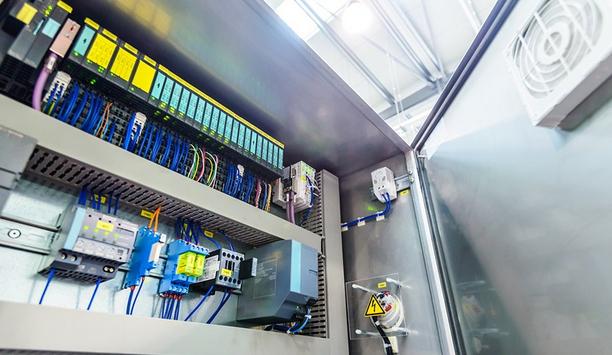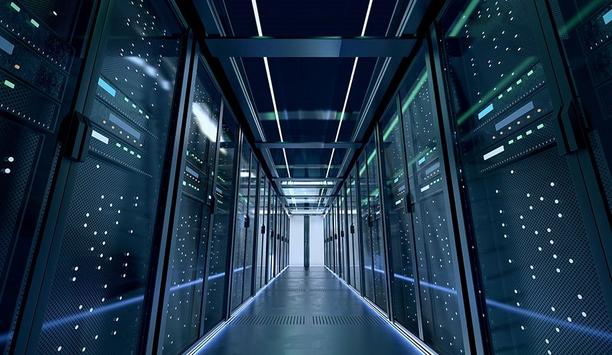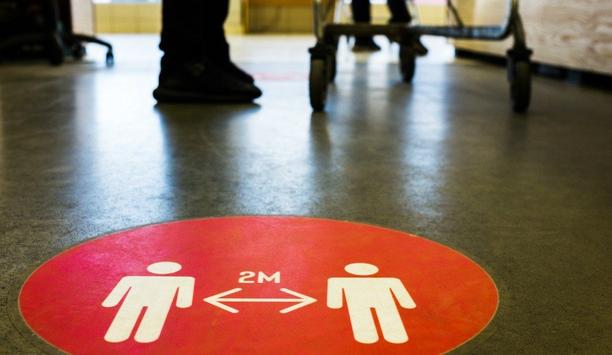Physical security - Expert commentary
Display solutions play a key role in SOCs in providing the screens needed for individuals and teams to visualise and share the multiple data sources needed in an SOC today. Security Operation Centre (SOC) Every SOC has multiple sources and inputs, both physical and virtual, all of which provide numerous data points to operators, in order to provide the highest levels of physical and cyber security, including surveillance camera feeds, access control and alarm systems for physical security, as...
The Annual Fraud Indicator estimates that fraud costs the United Kingdom approximately £190 billion every year. The private sector is hit the hardest and loses around £140 billion a year, while the public sector loses more than £40 billion, and individuals lose roughly £7 billion. The effects of fraud can be devastating on both individuals and organisations. Companies can suffer irreversible damage to reputation and be forced to close, and individuals can experience sign...
Over the past year, companies have had to deal with the COVID-19 pandemic and how it has affected their operations. From new digital services through to security, the response to more hybrid and remote working showed some of the assumptions that we have made over the years, and it required companies to innovate and fill those gaps. Physical and IT security was no exception to this. In the rush to support home working, many IT security teams realised how much they rely on physical security to he...
Human beings have a long-standing relationship with privacy and security. For centuries, we’ve locked our doors, held close our most precious possessions, and been wary of the threats posed by thieves. As time has gone on, our relationship with security has become more complicated as we’ve now got much more to be protective of. As technological advancements in security have got smarter and stronger, so have those looking to compromise it. Cybersecurity Cybersecurity, however, is s...
The transition to remote working has been a revelation for many traditional office staff, yet concerns over data security risks are rising. Mark Harper of HSM explains why businesses and their remote workers must remain vigilant when it comes to physical document security in homes. Pre-pandemic, home offices were often that neglected room in people’s homes. But now things are different. After the initial lockdown in 2020, 46.6% of UK workers did some work at home with 86% of those doing s...
The return to the workplace is a focal point for many in the built environment but one of the most important elements is easy to overlook. Guest services will be vital in the return to the workplace. Front-of-house teams will be responsible for welcoming building users back and reassuring them as they negotiate shared spaces in the post-Covid era. The workplace will inevitably look different after Covid. We have become more aware of our spaces, how clean they are, and what spaces building users...
While COVID-19 caused widespread disruption and many challenges for businesses, its sudden arrival prompted some very quick decision-making around how to maintain operations. For some businesses, cloud-based video conferencing solutions provided a welcome alternative to meeting face-to-face. A year on and it seems that this sudden and mass adoption of cloud has accelerated a digital transformation process in other departments. Physical security too is increasingly moving to the cloud in the form...
Enclosures containing electronics, communications or cabling infrastructure offer a simple attack point for cyber breaches and an opportunity for a physical attack on the hardware. Yet, many of these assets are housed within enclosures that provide minimal security features to offer a deterrent to any would-be attacker. This has always just been a pet hate. Walking down the high street of a town anywhere in the United Kingdom, you can often see open street communication cabinets. You can actual...
Once upon a time, providers had end-to-end control when deploying a physical security platform, which is not the case anymore when we consider the modernisation to IP. When considering the move to IP physical security, the provider needs to ensure the customer has a robust PoE backbone to connect the IP security device back to the application. Network readiness requirements have complicated IP security deployments, making it challenging for current providers while opening the door to new compet...
Once upon a time, providers had end-to-end control when deploying a physical security platform, which is not the case anymore when we consider the modernisation to IP. When considering the move to IP physical security, the provider needs to ensure the customer has a robust PoE backbone to connect the IP security device back to the application. Network readiness requirements have complicated IP security deployments, making it challenging for current providers while opening the door to new compet...
We encounter AI with increasing frequency, both online and in the media. AI has penetrated deep into various aspects of our lives, from TV sets that improve picture quality using AI, or air conditioners with automatic temperature and humidity control, to investment management services that predict return rates. AI technology first appeared in the 1950s and was briefly revived in the 1980s before falling off the radar. In the late 2000s, AI re-emerged and went on to become a key technology and d...
While the application of facial recognition within both public and private spheres continues to draw criticism from those who see it as a threat to civil rights, this technology has become extremely commonplace in the lives of iPhone users. It is so prevalent, in fact, that by 2024 it is predicted that 90% of smartphones will use biometric facial recognition hardware. CCTV surveillance cameras Similarly, CCTV is a well-established security measure that many of us are familiar with, wheth...
Since the start of the pandemic, almost a quarter of UK businesses have been forced to temporarily close, pause trading, or work remotely, with very little notice. Now nearing the 12th month of the crisis, the country is currently enduring its third national lockdown, with an unspecified timeframe. Most workers are being urged to remain at home and only venture out for essential travel. This means a huge number of premises across the board, from recreational venues such as theatres, pubs and le...
Urban populations are expanding rapidly around the globe, with an expected growth of 1.56 billion by 2040. As the number of people living and working in cities continues to grow, the ability to keep everyone safe is an increasing challenge. However, technology companies are developing products and solutions with these futuristic cities in mind, as the reality is closer than you may think. Solutions that can help to watch over public places and share data insights with city workers and officials...
Several major players vigorously employ biometric recognition technologies around the globe. Governments use biometrics to control immigration, security, and create national databases of biometric profiles. Being one of the most striking examples, the Indian Aadhaar includes face photos, iris, and fingerprints of about 1.2 billion people. Financial institutions, on their part, make use of biometrics to protect transactions by confirming a client's identity, as well as develop and provide servi...
As a leader, I am a big proponent of using what’s happened in the past — and is currently happening in the present — to better prepare our business and our customers for what’s to come. Applying this mindset in the financial industry is particularly helpful. The emergence of various technologies and trends enables us to determine what we can optimise for the highest efficiency and satisfaction level. The past few years have been focused on the Internet of Things (IoT), d...
For decades, the nature of global safety has been evolving. From physical security threats like large-scale terrorist attacks and lone actor stabbings to chemical threats such as the Salisbury poisonings and even microbiological threats such as COVID-19, new challenges are constantly arising and the threat landscape we operate in today is constantly changing. Compounding the complexity of the security issues is the complexity and nature of attacks. With the economic downturn, there is the tradi...
The role of physical security has expanded and grown rapidly over recent years. Below are some of our observations, particularly throughout the pandemic, and a look towards the changing times ahead. The new era of physical security The role of private security has shifted dramatically over the last decade and beyond. Historically, the focus was on protecting assets such as property and goods, but more frequently now the sector is being asked to play an even bigger role in protecting the...
In part one of this feature, we introduced the shotbolt – a solenoid actuator – as the workhorse at the heart of most straightforward electric locking systems. Shotbolts remain at the core of most sophisticated electric locking solutions as well. But they are supplemented by materials and technologies that provide characteristics suited to specialist security applications. Here we look at some more demanding electric locking applications and contemporary solutions. Preventing forced...
In the UK, one burglary occurs every 106 seconds. This means by the time you've finished reading this article, at least three will have taken place. Selecting robust physical security options to protect property boundaries and homes is essential to limit crime rates and deter opportunistic intruders. With 58% of burglaries said to take place while the homeowner is in, it seems that even the second wave of lockdowns, and an increased number of people confined to their homes, won't do much to eli...
One of the biggest trends in security and technology today is centered around solutions that take advantage of the wealth of connected security systems and devices powering the organisations all over the world. As the number of cloud-powered systems and sensors have massively grown in recent years, security leaders in the private and public sectors have started to look at ways to leverage the data from these devices to better the lives of employees, customers, and residents. But while the drea...
The threat landscape we operate in today is changing all the time. Around the world, pressures on law enforcement bodies remain incredibly high as they face the challenge of rising international threat levels and a backdrop of intense political, social and economic uncertainty. It is a challenge that demands a considered, proactive and dynamic response. It’s clear that new technologies, such as Artificial Intelligence (AI), can dramatically improve the effectiveness of today’s physi...
Blind spots in surveillance coverage, incompatible video and access control systems, lack of adequate perimeter measures—these are common issues that facility directors must address with their security teams. At the end of the day, facility executives need technology that accomplish more with less—that expand situational awareness, overall system functionality, and real-time response capabilities while generating cost-savings. By leveraging technology like thermal imaging, this is...
A recent survey compared how employees, tenants, property owners and managers, and developers feel about returning to the workplace, and what would make them feel safer. Among the responses from employees and tenants, 63% don’t feel comfortable returning to work, and cited their own health and safety, as well as the safety of their loved ones, as the main cause for concern. However, 73% of business owners said they plan on reopening as soon as possible, within 2-4 weeks. How can we fix the...
Schools play a key role in shaping our future. Following the reopening of classrooms up and down the country, young minds are returning to some normality. Once again they're being inspired, learning useful skills, and forging new interests to ensure our country's continued prosperity. Schools need a comprehensive security infrastructure to protect the children who attend them. Most notably, secure perimeters that keep unwanted people out, but also ensure visitors, parents, and students alike ca...
For bricks and mortar retailers, there’s no going back to how it was anytime soon. Even before the COVID-19 pandemic and economic crisis, they had been fighting a fierce battle against online shopping and significant e-commerce players. The high street has done a pretty good job of evolving over the years. From its humble beginnings in the late 19th century to its boom in the late 20th, it’s constantly adapted to meet changing consumer needs. The risk to retail But, i...
We still have some way to go before we see 5G service rolled out as a UK-wide service, but we can discuss future implications of 5G, and how it can improve device capabilities once its widely accessible. The impact of 5G lies within the increase in the amount of data that can be transferred between smart home devices through a cloud-based system. By utilising the cloud’s mass com...
Indoor positioning is, in many ways, an inside version of the satellite-navigation apps we rely on for outdoor navigation, but with an added twist – it can also be used to help locate people and things. Let’s say you’re at home and misplaced your car keys, or you’re in a grocery store and can’t find your favorite brand of coffee. Or maybe you’re working in a factory and need a particular tool from a storage bin, or you’re a site manager dealing with an...
In recent years, multinational corporations such as Cathay Pacific, Facebook, Uber and numerous others have been heavily fined due to security and data protection violations. This period has seen data protection laws increase as more and more information is gathered and shared online. As such, it becomes crucial to account for security capabilities when choosing an embedded device that touches potentially sensitive data. RFID readers very much belong to the ecosystem wherein personal or user i...
Electric locking is among the most ubiquitous examples of everyday security. Yet the complexity of electric locks and the advanced technologies deployed to provide simple, dependable and, for the most part, impenetrable locking often goes unnoticed. And that’s a good thing: when we take things for granted, it usually proves they’re fit for purpose. As experts in the field of solenoid actuated designs, we’re okay knowing that remote electric locking solutions are taken for grant...
Palm vein recognition
DownloadThe key to unlocking K12 school safety grants
DownloadSelecting the right network video recorder (NVR) for any vertical market
DownloadPhysical access control
DownloadCybersecurity for enterprise: The essential guide to protecting your business
Download

































